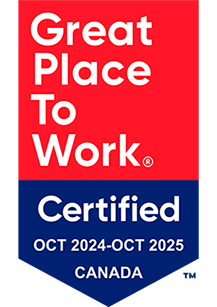The purpose of evaluating new epoxy or urethane materials is either to achieve a cost reduction in an existing manufacturing process or there is a new product being introduced. Evaluating new epoxy or polyurethane compounds can be quick and efficient if all the necessary preparations are completed ahead of time and everything is ready on the day of the trial.
 Significant amounts of time can be saved by prior preparation, in order to avoid incomplete or erroneous test results that can result in having to repeat the whole process over again to assure product suitability. The object of the exercise is to approve the product in the current or planned processing environment. This will ensure that the final transition will be smooth and trouble free.
Significant amounts of time can be saved by prior preparation, in order to avoid incomplete or erroneous test results that can result in having to repeat the whole process over again to assure product suitability. The object of the exercise is to approve the product in the current or planned processing environment. This will ensure that the final transition will be smooth and trouble free.
The following is a general check list of the most common items necessary to be successful the first time:
Recommended Steps
Have a sizeable number of components or inserts ready to process
- As the trial run progresses, there are always adjustments required to optimize the process. This can not be achieved if there are insufficient number of components available for processing.
- Utilizing only a few parts, during a short trial run, may not reveal potential problems, such as lead/lag problems in dispense machines, that develop only after continuous processing.
- Processing only a few sample parts may not at all be indicative of a day's production.
Have the parts prepared as per suppliers recommendations
- Any necessary degreasing or surface preparation should be completed.
- Any necessary accessories required, such as tapes, cable ties, extra inserts etc should be ready for use.
Have enough material (Epoxy or Polyurethane) on hand, ready for processing
- Running out of material after a few parts will kill the test run.
- The material should be prepared, ready to run, according to the manufacturer's instructions. This includes: pre-heating, fillers thoroughly mixed into each component, de-airing etc. if applicable.
- If the material requires pre-heat, it can take a considerable length of time for the mass to stabilize at the required temperature. Placing the containers in the oven ahead of time will ensure that the correct temperature is reached in time for the trial.
Prepare the process equipment
- In the case of automated dispense equipment, make sure that the equipment is clean, all the lines have been flushed and the mix head is clean or a new mix head is mounted. This is extremely important since the new material may not be compatible with the previous product resulting in possible cure problems.
- With automated dispense equipment, set and verify that the required mix ratio is set and correct.
- In case the processing is done by hand, there should be a number of clean containers along with clean mixing utensils available. Metallic containers and stainless steel spatulas are recommended.
- Hand processing requires that the material components are accurately weighed in the correct ratio. It is necessary to provide an accurate weigh scale for this purpose. Postage scales and the like are not sufficiently accurate for this purpose. An appropriate metric scale is highly recommended.
Prepare any ovens and other required ancillary equipment
- Pre-heat and post cure ovens should be up to the required temperatures.
- If the components require pre-heating, they should be placed into the oven ahead of time so that they are fully at temperature.
- Vacuum pumps and chambers should be ready, if necessary for the process.
- Quality control personnel and equipment, required for any intermediate checks should be available.
- Moulds requiring pre-heat should be at temperature and ready to go. Mould releases and other ancillary materials should be at the ready.
Pick the correct time for the trials
- Trials conducted under severe time constraints are rarely successful and often have to be repeated.
- There should be enough time allocated to allow for fine tuning the whole process as necessary. Since each change will require a period of time to stabilize, i.e. oven temperatures, mix ratio adjustments, pre-heat and post cure temperatures, it is imperative that there is enough time allocated to make these changes and obtain meaningful results.
- Key personnel should be available to conduct any necessary testing and carry out adjustments as the trial is progressing.
- The actual processing should be done by the personnel responsible for the subsequent daily production. This will provide them with the basic training and knowledge necessary to be successful in normal operations.
The above represents the key elements for a successful and efficient trial run to approve new materials or processes. Trial runs are frequently delayed or cut short due to insufficient preparations. This usually necessitates another trial under more favourable circumstances, increasing the cost of the process. It is a mistake to assume that the new material being evaluated will precisely fit the processing design of the old product and ignoring the instructions provided by the material supplier.
It is highly recommended that the planning involves discussions between all contributing parties as this will pay great dividends in being successful the first time.



